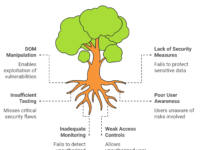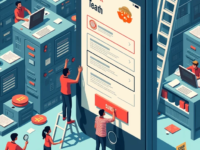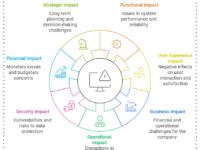Automation is often seen as a Hero 🦸 or a magic wand 🪄 in eyes of stakeholders—a tool that can save time, improve accuracy, and boost productivity. But as with all heroes, we sometimes give them too much power. When we place too much emphasis on automation, we risk missing out on the invaluable insights that come from exploratory testing. Let’s dive into the delicate balance between automation and manual testing and why the latter is just as critical in any test strategy.
Why Automation Isn’t Always a Silver Bullet 🔑
Don’t get me wrong—automation is a fantastic tool. It can run through regression tests faster than any human could, and it’s great for repetitive tasks. But here’s the catch: automation only does what we tell it to do. It runs predefined scripts and expects certain outcomes. That means it’s blind to anything outside the scope of those scripts.
For example:
- Automated tests won’t catch unexpected behavior unless you’ve predicted it and written a test case for it.
- They won’t explore the weird edge cases or quirky bugs that real users might stumble upon.
James Bach, a leading voice in the testing community, often emphasizes that “testing is an investigation, not just a verification process.” This means that while automation verifies what you already know, exploratory testing helps you discover the unknown.
The Mind Map of Testing: Finding the Balance ⚖️
Just go through the below mind map. Automation is just one branch of the larger tree of software testing. Exploratory testing, user testing, performance testing, and other branches contribute to the overall coverage. In fact, Michael Bolton has said, “Test coverage is not about how much of the code is executed; it’s about how much of the risk is examined.”
Below is a simplified mind map to illustrate how automated testing fits into the larger testing strategy:
Balance Discussion
Now that we’ve broken down each of these branches, it’s important to recognize that focusing too heavily on one branch (like automation) risks creating blind spots. Each branch—whether it’s exploratory testing or performance testing—offers insights that are crucial for thorough testing.
For example, exploratory testing can uncover unexpected user behaviors or edge cases that automated tests might miss, while security testing ensures that the application is safe from external threats. Here are the trade-offs:
Automation Pros:
- Efficiency: Handles repetitive tasks with speed.
- Consistency: Executes the same steps every time, avoiding human error.
Automation Cons:
- Rigidity: Can’t adapt to unexpected scenarios or changes in the application.
- Blind Spots: Misses out on testing new features or unpredicted behavior.
Exploratory Testing Pros:
- Creativity: Human testers bring insights and spontaneity.
- Broad Coverage: Can discover novel bugs and untested areas.
Exploratory Testing Cons:
- Time-Consuming: Requires manual effort and time.
- Inconsistent: The results can vary depending on the tester’s experience and mood.
So, we learn that…
The goal of this mind map is to help you visualize the importance of each testing method. When automation dominates the testing process, important bugs slip through the cracks. Balancing automation with exploratory testing ensures your product is tested from all angles—both the ones you expect and the ones you don’t.
By finding the right balance between the structured efficiency of automation and the insightful, unpredictable nature of exploratory testing, you can maximize your test coverage and minimize risk. Each of these branches contributes to the overall health of your testing process—so don’t rely too heavily on one over the others!
The Pitfalls of Over-Automation: Two Real-Life Bottleneck Examples 🚧
Now, let’s get into two real-world scenarios where over-reliance on automation can backfire.
1. The Phantom Bug 👻
Imagine you’ve automated all your regression tests for a web app. Everything passes—green lights across the board. You think, “Great! Time to ship it.” But then, a user reports a bug where, under certain conditions, the form submission breaks when using a specific browser.
Automated tests might have missed this because they only tested on a handful of common browsers. Exploratory testing, on the other hand, would have involved testers experimenting with different browsers and devices, catching this issue early.
Here’s a tip: Always set aside time for manual, exploratory testing after your automated tests run, especially for cross-browser compatibility.
2. The Forgotten Feature 🔍
Your automated tests are focused on core functionalities—sign-up flows, checkout processes, etc. But in a recent sprint, a small but crucial feature (like saving a user’s preferences) was added to the app. Since your automated tests weren’t updated to include this new feature, it slips through the cracks and isn’t tested at all.
Exploratory testing, by nature, encourages testers to explore the product in its entirety and may catch these forgotten features that automation overlooks.
The lesson here? Automation is only as good as the test cases you write. Exploratory testing ensures nothing gets left behind.
Different Perspectives on Automation 🧠
Here are some contrasting opinions on the role of automation in testing:
- Pro-Automation: Automation allows for faster feedback loops, continuous integration, and scalability. According to industry experts, it enables developers and testers to focus on high-level tasks, leaving the repetitive, mundane tasks to the machines.
- Pro-Exploratory Testing: On the flip side, exploratory testing provides a human element—a layer of creativity and intuition that no machine can replicate. Jonathan Bach once pointed out, “Exploratory testing is a simultaneous learning, test design, and test execution process.” Without this, you miss out on real-world scenarios.
The balance between these two views is key. Automation should complement, not replace, manual testing.
A Simple Example of Automation vs. Exploratory Testing 🎯
Here’s a quick comparison table to see where each method shines:
| Aspect | Automation Testing | Exploratory Testing |
|---|---|---|
| Speed | Fast for repetitive tasks | Slower, but insightful |
| Coverage | Limited by predefined scripts | Broad and spontaneous |
| Finding Unexpected Bugs | Only if scripted | Often finds hidden bugs |
| Human Creativity | Absent | Central to the process |
| Cost of Maintenance | High (needs constant updating) | Low (just needs testers’ time) |
Takeaway: Both approaches are important, but don’t fall into the trap of thinking that automation can do it all.
Automation Maintenance Costs: Hidden Time Sink 🕰️
While automation speeds up regression tests, there’s a hidden cost many teams overlook: maintenance. Test scripts break. They need updating with every UI change or feature adjustment. The time you save with automation can easily be eaten up by maintaining those scripts.
A tip for better automation strategy: Adopt design patterns like the Page Object Model (POM) or use Cucumber for behavior-driven testing (BDD). These reduce maintenance overhead and make tests more modular and easier to update.
Wrapping Up: Don’t Throw Away Your Exploratory Hat 🎩
In conclusion, while automation is a powerful tool, it should never replace the human touch that exploratory testing provides. They are complementary strategies that, when used together, provide robust coverage and catch more bugs. Remember the wise words of Cam Kaner, who said, “Testing is the process of comparing the invisible to the ambiguous, so that we can understand what is probably true.”
So, keep automating, but don’t forget to take off the blindfold and explore the software with fresh eyes.
Want to dive deeper into the topic? Check out related articles by Michael Bolton and James Bach.










